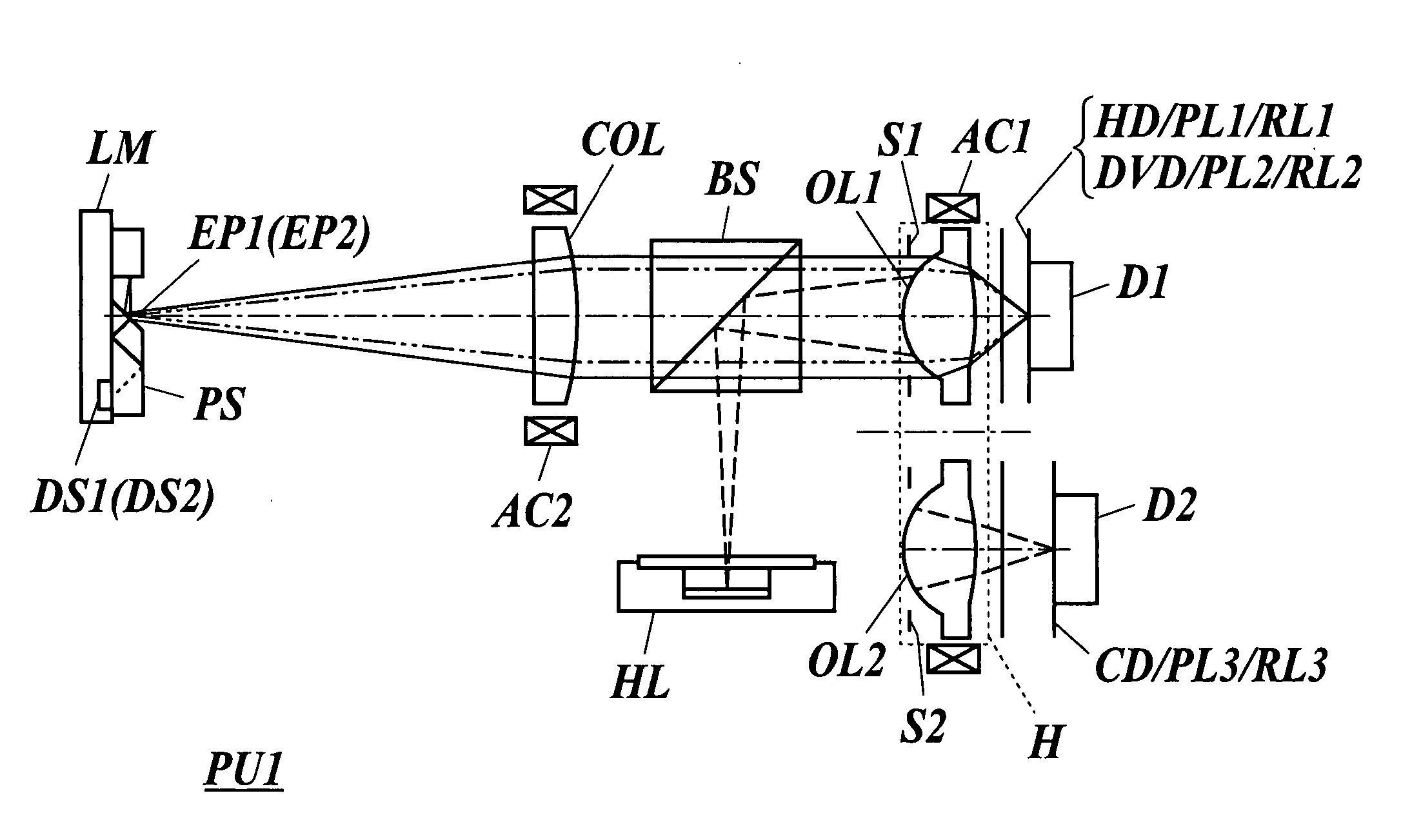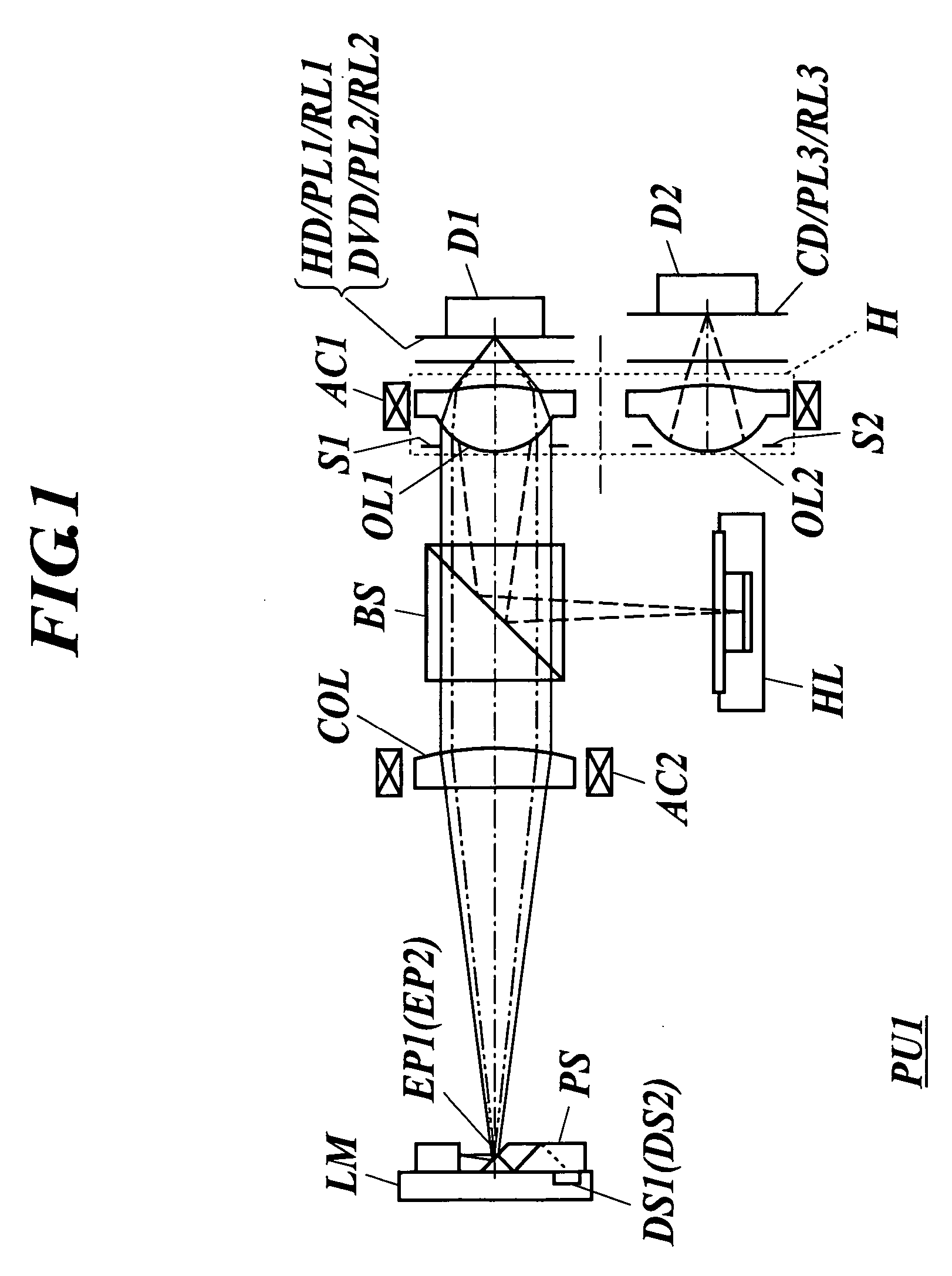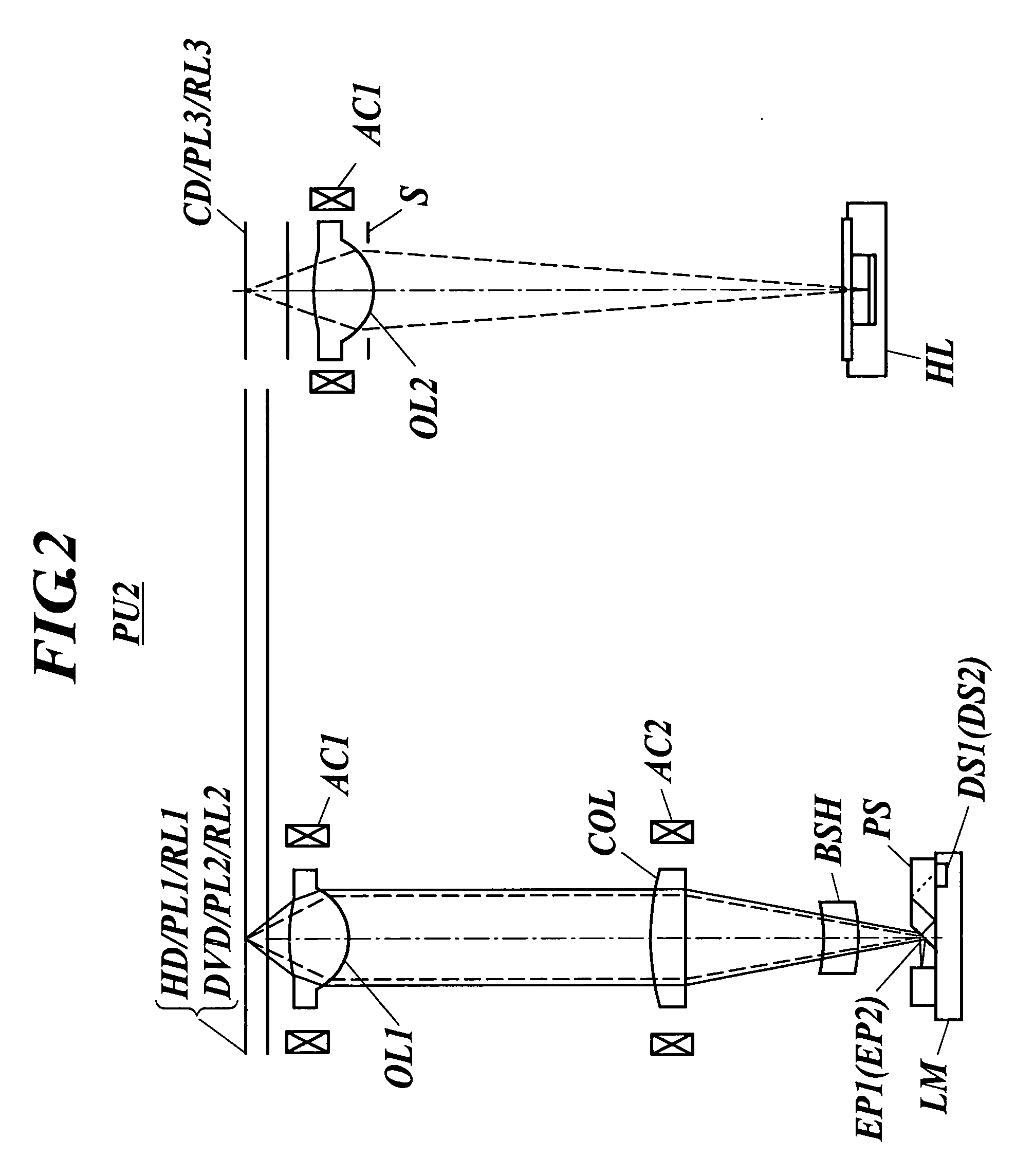Optical pickup device
a pickup device and optical technology, applied in the field of optical pickup devices, can solve the problems of insufficient product value of optical disk players/recorders, inability to only properly perform recording and/or reproduction of information, and increase costs, so as to achieve the effect of reducing the risk of coma, and reducing the cost of light us
- Summary
- Abstract
- Description
- Claims
- Application Information
AI Technical Summary
Benefits of technology
Problems solved by technology
Method used
Image
Examples
example 1
[0121] Next, a description is given of an example. Example 1 is an example of the first objective optical element OL1 suitable for the optical pickup device shown in FIGS. 1 to 3. The second objective optical element dedicated to the CD can be a publicly known optical element. Lens data of Example 1 is shown in Table 1. Hereinafter (including the lens data in the table), an exponential in decimal (for example, 2.5×10−3) is represented using E (for example, 2.5E-3).
TABLE 1Lens data of Example 1Objective Lensf1 = 2.30 mmf2 = 2.36 mmFocal LengthImage SideNA1: 0.65NA2: 0.65NumericalApertureSecond Surfacen1: 3n2: 2DiffractionOrderMagnificationm1: 0m2: 0i-thsur-dinidinifaceri(407 nm)(407 nm)(655 nm)(655 nm)0∞∞1∞0.010.01(Stop(φ2.99 mm)(φ 3.07 mm)Size)21.551961.400001.5598061.400001.5407253−8.239711.121.01.161.04∞0.61.618690.61.577525∞*di represents a distance between the i-th and (i + 1)-th surfaces.Aspheric dataSecond surfaceAspheric coefficientκ−2.5377E−01A4−9.5198E−03A6−5.2537E−03A84....
PUM
 Login to View More
Login to View More Abstract
Description
Claims
Application Information
 Login to View More
Login to View More - R&D
- Intellectual Property
- Life Sciences
- Materials
- Tech Scout
- Unparalleled Data Quality
- Higher Quality Content
- 60% Fewer Hallucinations
Browse by: Latest US Patents, China's latest patents, Technical Efficacy Thesaurus, Application Domain, Technology Topic, Popular Technical Reports.
© 2025 PatSnap. All rights reserved.Legal|Privacy policy|Modern Slavery Act Transparency Statement|Sitemap|About US| Contact US: help@patsnap.com



